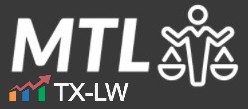We’ve all experienced those moments when we say something and realize our wording wasn’t perfect. Yet from the other person’s nod or response, we can tell they understood our meaning perfectly well. We don’t feel the need to repeat ourselves with better phrasing. This is simply part of being human.
A similar situation occurs with income tax filings. Consider a taxpayer whose e-filed return gets rejected due to a technical issue. The taxpayer then submits a paper filing, perhaps using a slightly incorrect form. In both attempts, the IRS receives the essential tax information and understands what the taxpayer is communicating.
In these cases, can the IRS legitimately claim these tax returns were never filed? The case of McDow v. United States, No.1:21-cv-00732 (Fed. Cir. April 1, 2025) addresses this very question. The decision considers when an informal refund claim meets the timeliness requirements and how tax returns and refund claims work together under statutory deadlines.
Contents
- 1 Facts & Procedural History
- 2 Tax Refund Claim Deadlines Under Sec. 6511
- 3 What Is the Informal Claim Doctrine?
- 4 How Does the Informal Claim Doctrine Interact with Sec. 6511’s Deadlines?
- 5 Is a Formal Return Required?
- 6 Why Did the 2013 Refund Claim Fail?
- 7 The Takeaway
- 8 Watch Our Free On-Demand Webinar
Facts & Procedural History
The taxpayer in this case had overpaid taxes for multiple years. We are going to focus on the 2013 tax year in this article.
For tax year 2013, the taxpayer made a payment in January 2014. He tried to file his 2013 tax return with the IRS electronically in April 2015, but the IRS rejected the filing. Instead of immediately resubmitting the return, the taxpayer filed a Form 843 (Claim for Refund and Request for Abatement) in December 2016. This form was filed more than two years after his tax payment but within three years of his first filing. The taxpayer eventually filed a formal tax return for 2013 in June 2018.
After the IRS denied the refund claim, the taxpayer filed suit in the court of federal claims. In its first ruling on the government’s motion to dismiss, the court determined that the Form 843 qualified as an informal refund claim and was timely filed within the three-year statutory period. The government then filed a motion for reconsideration, arguing that without a formally filed tax return, an informal claim must be filed within two years of payment—not three years.
Tax Refund Claim Deadlines Under Sec. 6511
Most questions about timing for refund claims involve the IRS not carrying out its duties timely. The IRS does nothing timely.
The IRS audits years in arrears, routinely forces taxpayers to extend the three year audit period for these old years, and then essentially never processes refund claims timely before the three years expires. This puts taxpayers in a position of having to review the rules in Section 6511 regularly to avoid losing refunds–often not for their own fault, but for the IRS’s inability to act timely.
The timing requirements for refund claims are set out in Section 6511 of the tax code. This section creates two different deadlines depending on whether the taxpayer has previously filed a tax return.
Section 6511(a) says that if a taxpayer must file a return, a refund claim “shall be filed by the taxpayer within 3 years from the time the return was filed or 2 years from the time the tax was paid, whichever of such periods expires the later, or if no return was filed by the taxpayer, within 2 years from the time the tax was paid.”
This creates two paths: taxpayers who file returns generally have three years from the filing date to request a refund. Those who don’t file returns have only two years from the payment date. This one-year difference matters when dealing with tax audits and refund claims. Whether the 2 or 3 year period applies can be problematic for taxpayers as missing the filing deadline by even a few months can lose substantial refund amounts they would otherwise be entitled to receive.
Beyond these filing deadlines, Section 6511(b) also creates “look-back” periods that limit how much a taxpayer can recover even with a timely claim. If a claim is filed within the three-year period, the refund is limited to taxes paid within three years (plus any extension) before the claim. If the claim is not filed within that three-year period, the refund is limited to taxes paid within two years before the claim.
What Is the Informal Claim Doctrine?
Courts created the informal claim doctrine as an exception to the formal requirements for tax refund claims.
We have previously considered several cases involving informal refund claims, such as claims signed by tax attorneys, substantial variance and informal claims, and whether an IRS audit report itself an informal claim. Under these court cases, a document that doesn’t meet all the technical requirements for a formal refund claim may still work as a placeholder if it tells the IRS of the taxpayer’s intent to seek a refund.
For an informal claim to be valid, it must tell the IRS in writing that the taxpayer wants a refund. It must specify the tax year and reasons for the refund claim. And the taxpayer must follow up with a formal refund claim within a reasonable time.
The informal claim doctrine helps prevent taxpayers from losing refund rights due to technical problems, as long as they give the IRS enough notice of their claim. This doctrine helps taxpayers unfamiliar tax returns and filing requirements avoid tax litigation for not following the precise procedural filing requirements.
Courts have used this doctrine in many contexts, including cases where taxpayers sent letters, protests, or other documents that clearly showed they wanted a refund, even if these documents didn’t meet official claim requirements. The doctrine essentially favors substance over form in these situations.
How Does the Informal Claim Doctrine Interact with Sec. 6511’s Deadlines?
The main question in McDow was how the informal claim doctrine works with Section 6511’s timing requirements. Does an informal claim filed before a tax return is filed use the three-year period, or does it use the two-year deadline that applies when “no return was filed”?
The government said an informal claim cannot replace a tax return to trigger the three-year deadline. According to this view, the statute treats “claims” and “returns” as separate documents with separate purposes. While the informal claim doctrine allows an informal document to stand in for a formal refund claim, it doesn’t allow that same document to count as a tax return. Thus, the informal return was never filed for purposes of Sec. 6511.
This matters because Section 6511(a) specifically says that if “no return was filed,” the taxpayer has only two years from payment to file a refund claim. The government argued that an informal claim filed before a tax return must meet this two-year deadline to be timely.
Is a Formal Return Required?
The Court of Federal Claims looked at two key cases: Wertz v. United States and Libitzky v. United States. Both cases dealt with whether an informal claim can use the three-year deadline without a tax return.
In Wertz, another judge on the Court of Federal Claims held that an informal claim must be filed within two years of the tax payment to be timely when no return has been filed. The court said that while the IRS can waive its requirement that a claim be filed on the correct form, it cannot change Congress’s statute of limitations, which represents a waiver of sovereign immunity.
In Libitzky, the Ninth Circuit separated the “limitations period” in Section 6511(a) from the “look-back” period in Section 6511(b). The court defined a “refund claim” as a request for a refund of an overpayment, and the “tax return” as the formal filing with the IRS. The court held that an informal claim filed before a tax return must meet the two-year deadline.
After reviewing these cases, the Court of Federal Claims in McDow agreed with Wertz and Libitzky. The court said the statute requires filing a formal tax return to get the benefit of the longer look-back period. When a taxpayer files an informal claim before filing a tax return, that informal claim must be filed within two years of the tax payment to be timely.
Why Did the 2013 Refund Claim Fail?
When the court applied this to the case, it found that the informal claim for 2013 was untimely. The taxpayer filed Form 843 in December 2016, more than two years after the January 2014 payment to the IRS. While the form might have qualified as an informal claim, it was filed too late to meet the two-year deadline.
The taxpayer also argued that his attempted April 2015 electronic filing should count as a tax return for purposes of the statute of limitations, which would give his Form 843 the benefit of the three-year period. But the court rejected this argument. The court noted that because the IRS rejected the filing, the taxpayer needed to refile. Since the IRS did not consider the rejected filing as a valid return, and the taxpayer did not formally file a return until 2018, the informal claim was subject to the stricter two-year deadline.
The court emphasized that when an electronically filed tax return is rejected, the taxpayer must refile for it to be considered filed. This puts the responsibility on taxpayers to ensure their electronic filings are accepted rather than assuming rejected submissions count as filed returns.
The Takeaway
This case clarifies how the informal claim doctrine works with Section 6511’s timing requirements. An informal claim filed before a tax return must meet the two-year deadline from payment to be timely. This preserves the difference between claims and returns while still allowing the informal claim doctrine to work as an equitable remedy in appropriate cases. For taxpayers seeking refunds, the message is clear: file tax returns promptly, follow up on rejected electronic filings, and watch the deadlines for refund claims. When electronic filings are rejected, taxpayers must act quickly to refile, as rejected submissions do not count as filed returns for purposes of extending the refund claim period.
Watch Our Free On-Demand Webinar
In 40 minutes, we'll teach you how to survive an IRS audit.
We'll explain how the IRS conducts audits and how to manage and close the audit.


